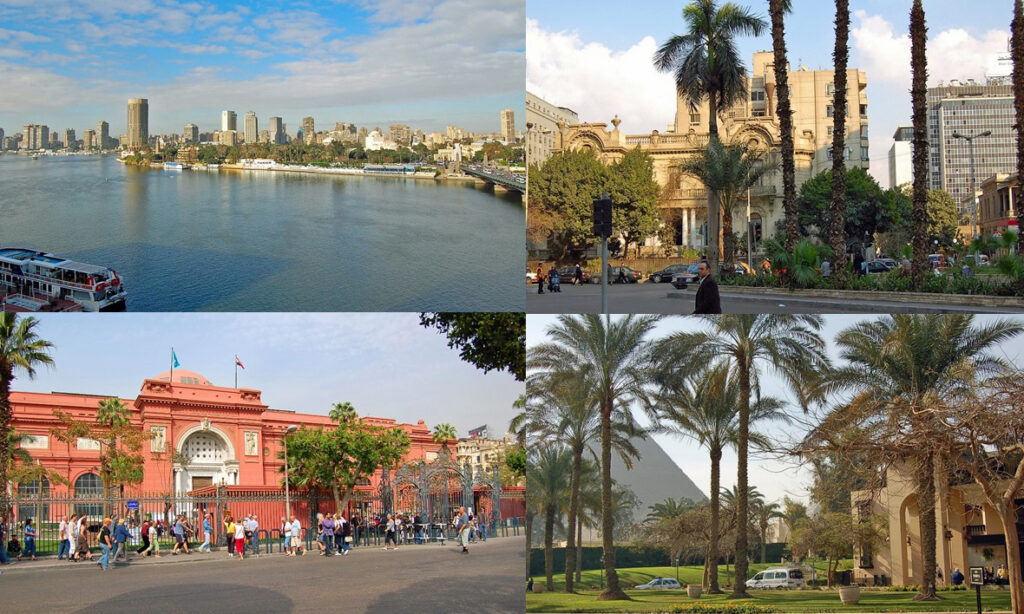Today, in the first of a series about Egyptian cities with pleasant winter weather, we will visit Cairo, with February high temperatures averaging 69 degrees, with 75 percent of possible sunshine.
Cairo, the capital of Egypt, lies along the Nile River about 100 miles upriver (south) of the Mediterranean, a location near the beginning of the Nile Delta that has been important to Egyptians for thousands of years. Beginning in about 2600 B.C., Old Kingdom pharaohs built the famous pyramids of Giza on a plateau now on the outskirts of Cairo. Memphis, the capital of ancient Egypt, was in the same area. The modern history of Cairo began in 969 A.D. when the Muslim rulers of Egypt established a city on the east bank of the Nile, which became Egypt’s capital 200 years later. By the fourteenth century, Cairo had replaced Baghdad as the center of the Islamic world.
Today, Greater Cairo, with more than 21 million people, is the world’s sixth most populous urban area. Despite Cairo having its share of slums, overcrowding and traffic, the downtown area rivals most European cities for its attractiveness and accommodations, with luxurious hotels offering a great view of the Nile. The five-star Mena House Hotel, once a royal hunting lodge, is within walking distance of the Giza pyramids and Great Sphinx. Visitors to Cairo who want to learn about Cairo and its history should visit, in addition to the pyramids, Coptic Cairo (home to early churches), Islamic Cairo (with many historic mosques), the Citadel, the Egyptian Museum, the Khan el-Khalili bazaar and Saqqara (an ancient burial ground including the Stepped Pyramid). Visitors next winter should be able to visit the much-delayed Grand Egyptian Museum next to the pyramids, said to be the largest archeological museum in the world, displaying all 5000 items from the tomb of King Tut.

Comments are closed.